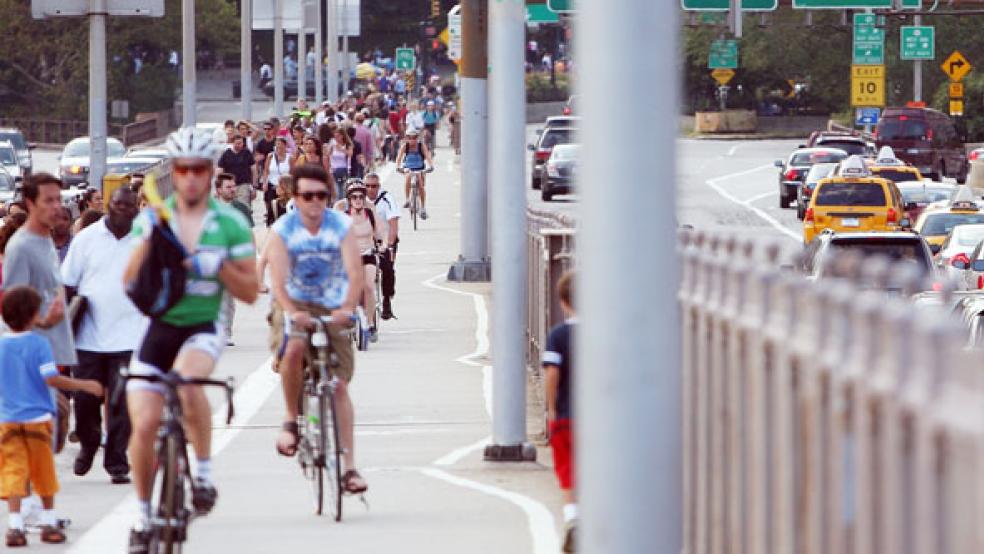The bike craze has exploded in dozens of cities around the country, but in reality, nearly 9 out of 10 Americans still drive to work, and about 70 percent of car trips are less than two miles long. With the obesity rate at 33.8 percent and rising every year, could biking improve health fitness, reduce air pollution and lower health care costs? A recent study in the journal Environmental Health Perspectives calculated the health care savings in 11 metropolitan areas in the Midwest if half of car trips under 2.5 miles each way were made by bicycle. The good news: mortality would decline by approximately 1,100 deaths per year due to increased exercise and better air quality. The health care savings from increased exercise would yield about $3.8 billion a year. The health care savings of better air quality would be $3.5 billion a year. Combined, that’s over $7 billion a year.
According to the study, 32.4 percent of the U.S. population is fully inactive (they don’t sustain moderate or vigorous physical activity for more than 10 minutes at a time), and only 33.5 percent is physically active (30 min of exercise a day, five or more days a week). Benefits from increased physical activity include lower incidents of heart disease, stroke, colon cancer, type 2 diabetes, breast cancer, obesity, and osteoporosis. At the same time, reduced exposure to air pollution has been found to lower overall mortality and reduce asthma, bronchitis, respiratory infections, and hospital admissions.
And a total savings of $7 billion was only the beginning, according to one co-author of the study, Jonathan Patz, who said the estimate was conservative since the study assumed that Midwesterners would bike only four months out of the year in good weather. In sunnier locations, the savings could be even higher. The next topic the teams plans to study is the health benefits of taking mass transit.


